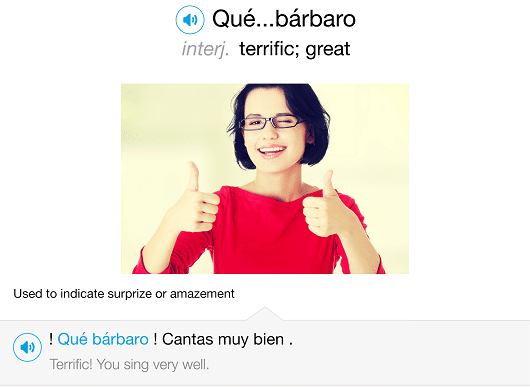Contents
- 1. Pictionary Plus
- 2. Whose Line Is It Anyway?
- 3. Simon Says
- 4. Find Someone Who…
- 5. Word Scramble
- 6. Mad Libs Rub Out and Replace
- 7. Auction Time
- 8. Bingo
- 9. Charades
- 10. Hot Potato
- 11. Jeopardy
- 12. Twister
- 13. Grammar Races
- 14. Jigsaw Puzzle
- 15. Grammar Relay
- 16. Grammar Detective
- 17. Story Cubes
- 18. Grammar Spinners
- 19. Grammar Role Play
- 20. Taboo
20 Grammar Games for the Language Classroom

Do you remember playing games as a child? Of course you do.
Did you realize that you were actively learning while you were playing? You were learning to count, to reason, to develop strategies, to negotiate, to debate and argue, to make decisions and to think critically.
So why not use games to reinforce grammar rules and structure in your ESL or language classroom?
That’s why we’ve compiled this post, which includes 20 of the most fun and effective grammar games for your ESL or other language classroom.
Download: This blog post is available as a convenient and portable PDF that you can take anywhere. Click here to get a copy. (Download)
1. Pictionary Plus
Pictionary, always a popular game in my classroom, can be transformed into a grammar exercise for languages with complex inflections like Russian, German or Latin.
Divide the class, provide vocabulary, and have teams draw simultaneously. Guessing earns a point, followed by practicing inflections in a dialogue for another point.
For instance, with “car” in Russian, students form a dialogue showcasing feminine endings. This creative approach accelerates mastery of inflections, reinforcing crucial grammatical patterns.
Swiftly mastering these endings is pivotal in language acquisition, making this grammar game a valuable tool.
2. Whose Line Is It Anyway?
“Whose Line Is It Anyway?” was a renowned British comedy game show later adapted by Drew Carey in the U.S. The namesake game involved improvising from random audience-written sentences.
This concept can be re-imagined for foreign language classrooms. Using IKEA’s dialogue bubble notepads, insert prompts related to chapter content. Students incorporate these prompts when directed, adding an unpredictable element. For example, when deciding where to eat, a student may unexpectedly say, “I want to go to the circus,” leading to creative dialogue.
This game fosters spontaneity, language manipulation and natural grammar use, embodying a well-crafted grammar activity.
3. Simon Says
“Simon Says” was a childhood favorite, challenging others to act without the command. It’s excellent for teaching body parts, but can be transformed into a grammar game, particularly for languages with distinct imperatives. Select verbs, write on cards, and have a student draw one, instructing, for example: “Simon says jump!”
The twist: students must not comply if the imperative is incorrect. Correct commands eliminate tricked players. If “Simon” falters, a new leader steps up. This game ensures engaging command practice, reinforcing proper formation. No one wants to be the one stumbling over their instructions in this lively grammar activity.
4. Find Someone Who…
Transform the initial class information-gathering into a dynamic grammar game. Craft about 20 implied questions in the target language, aligned with their proficiency.
Ensure there’s a match in the class for each question. Incorporate a few about yourself to foster interaction. The game unfolds in two phases: students ask 2-3 questions to peers, receiving complete sentence responses.
Then, as a group, a student asks, for example, “Who speaks Italian?” and another answers in full. This activity reinforces inflected verb forms, practicing crucial conjugations they’ll recall for future application.
5. Word Scramble
Foreign language students, though not all future linguists, relish playing with language. Introduce a unique twist to traditional word scrambles. Break a sentence into its basic components, distribute the words to groups and challenge them to reconstruct the sentence.
For languages like Russian or German, provide nouns and adjectives in nominative form, and verbs in infinitive form, adding complexity. Require students to not only grasp word meanings but also select the correct grammatical forms. Optionally, include an adverb hinting at tense. This exercise compels them to employ comprehensive linguistic knowledge, fostering critical thinking.
6. Mad Libs Rub Out and Replace
Elevate the traditional grammar game “Rub out and replace” by incorporating a round of Mad Libs for added excitement. Begin with a paragraph, omitting key words, and prompt students to provide specific word forms (for example: accusative-case noun, third-person plural verb).
Read the resulting paragraph aloud for a good laugh at the absurdity. Then, project the completed version for groups to erase particularly outlandish words and generate a new, sensible story. This exercise fosters grammatical accuracy, encouraging students to negotiate both grammatically and semantically sound word choices within the context.
7. Auction Time
Auction Time is an engaging game that combines elements of competition and currency.
Students are given a set amount of play money and take turns bidding on sentences or phrases containing specific grammar structures. This game not only reinforces correct grammar usage but also encourages strategic thinking as students decide how much to “spend” on each sentence.
The excitement of the auction format adds an element of fun and motivation, making it an effective tool for grammar reinforcement in the ESL or other foreign language classroom.
8. Bingo
Bingo is a versatile game that adapts well to grammar practice. Each student is provided with a bingo card containing sentences or phrases that exemplify specific grammar points.
You’ll have to take some time before class to make these, but you can use them over and over again.
As you call out sentences, students mark them off on their cards.
This game promotes active listening and recognition of correct sentence structures. Additionally, the competitive aspect of trying to complete a row or column on the bingo card adds an element of excitement to the learning process.
9. Charades
Charades is a lively and interactive game that encourages students to embody specific grammar points, and it gets students up and moving, which is great for a Monday morning, for example.
In this game, students take turns acting out sentences or phrases without using any verbal communication. Classmates must guess the grammar point being demonstrated.
This activity promotes creativity, active engagement and an intuitive understanding of grammar structures as students physically act out the language.
10. Hot Potato
Hot Potato is a fast-paced and interactive game that challenges students to think on their feet.
In this game, students pass an object while using sentences or phrases containing a specific grammar structure. It could be anything from a Post-it note to a picture of a dog running, for example, to show the present progressive verb tense.
When the music stops, the student holding the object must answer a question using the designated grammar point.
This game promotes quick thinking, sentence formation, and active engagement with the grammar rules.
11. Jeopardy
Jeopardy is an educational adaptation of the popular quiz show and students seem to always love playing it.
In this game, students participate in a competitive quiz format where they must answer questions related to specific grammar points. You’ll have to brainstorm the questions beforehand, or you can just make them up on the spot for the specific categories. I suggest using the past tense, present tense and future tense to start.
With categories and point values, Jeopardy encourages students to demonstrate their knowledge in a fun and interactive way, making it an effective tool for grammar review and reinforcement.
12. Twister
As teachers we know that our students need to get up and move once in a while.
Twister satisfies this because it’s a physical game that combines the classic game of Twister with grammar practice.
You’ll have to make a Twister board that’s customized with grammar points instead of colors, but as with many of these game materials, you can use them year after year.
The game is played the traditional way: students must place their hands and feet on the correct spots as called out by the teacher.
This game not only promotes kinesthetic learning but also reinforces correct grammar usage in a memorable and engaging way.
13. Grammar Races
Here’s another game to get tired students up and moving. Grammar Races is a high-energy game that encourages speed and accuracy in grammar usage.
Students are divided into teams and race to write correct sentences on the board in response to prompts from the teacher. You might say, for example: Write a sentence in the present perfect tense.
This game fosters healthy competition while reinforcing grammar knowledge and sentence construction skills.
14. Jigsaw Puzzle
Jigsaw Puzzle is a whole class team effort in your classroom, which also helps foster the classroom community.
Each student gets a slice of a sentence, and they’ve got to team up and put the whole thing together. It’s all about working together, chatting it out and really grasping how sentences come together.
The game is all about teamwork, honing those communication skills and really nailing down how sentences are built.
I suggest starting off with a comic paragraph, so get students laughing as they learn.
15. Grammar Relay
Grammar Relay is an exciting team challenge, injecting a dose of competition into grammar drills that will get your students excited.
Put your students into teams and have them race against the clock, feverishly jotting down accurate sentences on the board, fueled by prompts from you. You might, for example, say: Past perfect. Then students have to rush to write a perfect past perfect sentence.
This lively activity sparks quick thinking, fosters teamwork and solidifies the application of precise grammar rules. It’s not just about rules; it’s about mastering the art of effective communication.
16. Grammar Detective
Grammar Detective is a stimulating exercise that sparks critical thinking.
Students become language sleuths, uncovering and rectifying errors within a paragraph that you’ve written beforehand. It must contain a mix of obvious and subtle errors to make them really work to find mistakes and correct them.
This game is all about paying close attention to the details and reading with care. This engaging game not only fine-tunes their observational skills but also nurtures a sharper eye for accurate grammar.
Through this process of detection and correction, students grasp a more profound comprehension of sound grammar usage.
17. Story Cubes
Story Cubes is a fun and creative game that sparks creativity by prompting students to weave tales from images or words rolled on dice. You have to buy the dice, but you can use them year after year, so it’s a good investment.
This game really triggers a burst of imagination, infused with targeted grammar elements, whenever I play it in my classroom.
In this game, students craft narratives that align with the designated grammar focus, infusing the learning process with dynamism and excitement. It also usually creates a lot of laughter as stories are often on the silly side.
18. Grammar Spinners
Grammar Spinners is a game that adds an element of surprise to grammar drills. You need to have a spinner prepared beforehand for this one. You can buy a grammar themed spinner, but I recommend making a large one that you can use in the front of the classroom. Imagine “The Price Is Right” and then copy theirs in your own DIY style.
Students then have to craft sentences based on where the spinner lands, infusing an element of unpredictability.
This dynamic approach keeps students fully engaged, prompting quick thinking and adaptability.
19. Grammar Role Play
Grammar Role Play is a creative and dynamic learning experience where students step into scenarios demanding the application of a specific grammar concept. For example, you could ask them to recite a story about last summer to focus on the past tense. Then they have to come up with the script and act out the role play in front of the classroom.
This is always fun, because students not only practice using language, but they truly get to see how grammar operates in everyday situations. In other words, this game really fosters real-life language use in all its glorious complexity.
Through role-playing, students cultivate communication skills, unleash creativity and hone their grammar prowess.
20. Taboo
Students always seem to love playing Taboo. The good news is that you can customize the game by adding specific grammar elements. For example, if you’re focusing on the past perfect, make cards with short phrases that are in the past perfect.
By making this a grammar themed version of Taboo, the game challenges students to describe a past perfect phrase without using certain key words. I like to make the nouns and the main verb the taboo words to make it challenging.
This encourages them to employ alternative grammar structures in their descriptions.
I hope you enjoyed these twists on some traditional games and find them useful in your teaching. Feel free to play around with the rules yourselves. Games are wonderfully adaptable, so have fun and be creative.
Download: This blog post is available as a convenient and portable PDF that you can take anywhere. Click here to get a copy. (Download)







